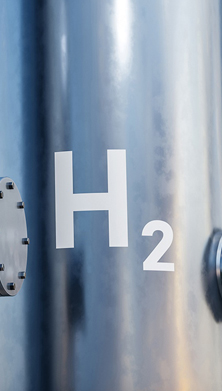The coronavirus outbreak has resulted in the biggest shutdown of business around the globe since World War II, impacting almost everyone from hospitality and services industries to commercial and industrial facilities. The closure of many plants and premises across the US, Europe and elsewhere across the world has quickly followed the lockdown of the world’s manufacturing superpower China in February 2020.
Short-term shutdowns have become the norm in most sectors. Businesses that haven’t retooled production to meet demand for crucial equipment required to combat the outbreak, such as masks, ventilators and respirators, for example, have discontinued operations in the interests of public safety rather than risk having employees and customers contract the virus.
As much as a business might be ready to open up its doors after a long pandemic quarantine - once authorities have deemed it is appropriate to do so - restoring a facility to pre-closure conditions can take some time. Companies still have to be vigilant about the risk environment in order to discover unknown problems that might have occurred during closure, as well as to mitigate losses that might occur as a result of reopening.
“Restoring operations at a facility that was once idle or vacant presents another set of loss prevention challenges, particularly to manufacturing plants with hazardous equipment or processes,” explains Stephen Clark, Global Technical & Expertise Manager for ARC Property at AGCS. “For example, fuel-fired equipment may need to be restarted, which creates an increased risk of fires and explosions. There may be a reduction in workforce available to operate and maintain production equipment safely or to respond to emergencies. Also, lapses in maintenance of buildings, equipment and fire protection systems may create hazardous conditions.”
Businesses should pay particular attention to the condition of electrical equipment and installations, as around 20% to 30% of fires AGCS sees are related to these. Insurers have also seen a number of claims from fires resulting from technical defects or operational error after machinery has been restarted or cleaned in preparation for reopening of facilities, which has then caused further disruption to operations. AGCS analysis of insurance industry claims shows that fires already account for almost a quarter (24%) of the value of all business insurance claims over a five-year period – the major cause of losses – while faulty workmanship and maintenance (8%) and machinery damage (5%) rank as the 3rd and 7th top causes of claims respectively [1].
Loss prevention measures
According to the publication, one of the first actions for businesses to consider before restarting operations is restoring site security – including building access, security systems, security guards, interior and exterior lighting and visitor/contractor control.
A thorough self-inspection of the site, including all buildings (interior and exterior) and equipment, to detect and correct any unsafe or abnormal conditions, such as damage, maintenance issues, improper housekeeping or storage, signs of vandalism, etc., should also be considered, according to the bulletin. Businesses should also complete and reinstate any inspection, testing and maintenance procedures that may have lapsed since the shutdown.
As always when restarting idle machinery, operators should follow standard operating procedures and manufacturer guidelines for bringing shutdown equipment or processes back online. In addition, those facilities introducing alcohol-based (flammable) disinfectants, such as hand sanitizers, should implement proper fire safety precautions. These precautions should include keeping them away from ignition sources, encouraging employees to rub their hands dry to allow vapors to safely dissipate, disposing of all waste rags in approved, normally closed containers, and storing flammables in designated cutoff rooms or approved cabinets.
“Prior to restarting operations is the ideal time to review the effectiveness of your business continuity plan,” says Clark. “Revise the plan as needed, based on lessons learned during the temporary shutdown to keep it up-to-date and ready to implement for any future emergencies.”
Further information & reading
Allianz Group companies
AGCS offices
Newsletter
Keep up to date on all news and insights from AGCS















